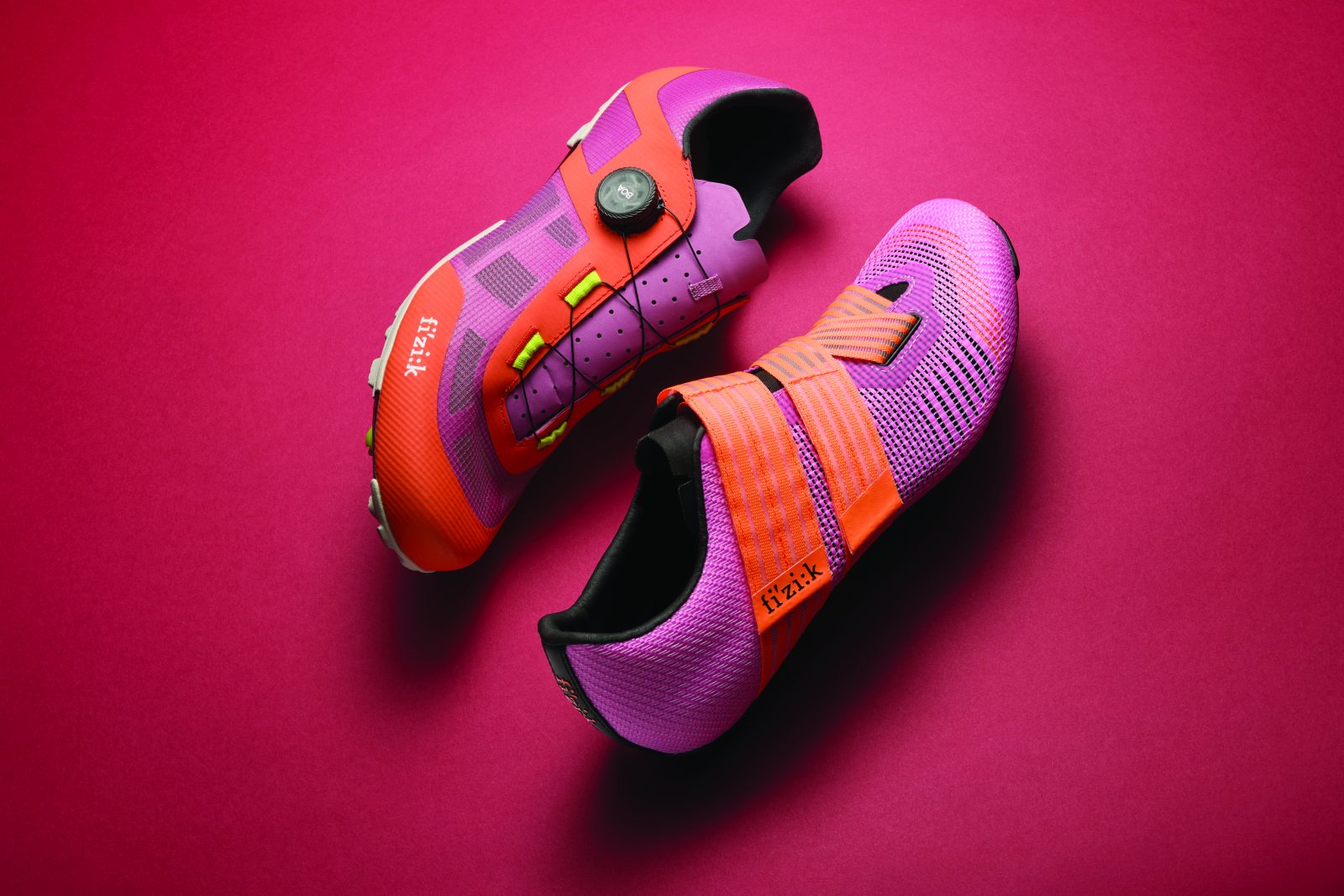It’s classic Campagnolo: great performance with a few quirks
By Sam Challis
Photos by Lizzie Crabb
As Cyclist reported in issue 76,Campagnolo is positioning the new Super Record 13 groupset as the product to get it back on track after a difficult few years. That article detailed 13’s updates over its WRL and S predecessors, but to quickly revisit the headline changes: 13 is lighter, cheaper, uses a 13-speed cassette, offers more gearing options, looks better and reinstates (a version of)Campagnolo’s iconic thumb shifter.
What’s more, this road version of the groupset is merely one setup in a five-variation family, which Campagnolo will fill out over the next year or so. At launch, there was a real sense of hope that 13 was the real deal. Campagnolo was back once again talking the talk, but could it actually walk the walk? I’ve spent the last month using the new Super Record groupset to find out.

Crunching the numbers
Before we get into the meat of my observations, it makes sense to run through the basic comparisons between Super Record 13 and its main competitors in Shimano Dura-Ace and Sram Red AXS. In terms of weight, each of the three brands argues its top groupset takes the weight weenie title, but in reality all three are now within an inconsequential handful of grams of each other, around the 2.5kg mark dependent on setup.
‘Redesigned components, such as the more skeletal rear derailleur, and alternative material choices in certain areas are responsible for the weight reduction,’ says Arjan Hoogesteger, Campagnolo’s export manager.
More importantly, Super Record is offered at a similar price to its rivals, with Hoogesteger citing improved production efficiency and reduced cost of electronic parts as the reason. Obviously, retailers’ discretionary discounts operate outside the known laws of logic and economics, but at least recommended prices for Super Record now sit around that of Dura-Ace and Red, though it’s worth mentioning Red is power meter and head unit-equipped for that price, while opting for a power meter on Super Record 13 adds $2k to its price.
Aftermarket groupsets occupy a vanishingly small niche, however, so more pertinently 13’s cost coming into line means bike brands can offer it as original equipment on standard builds without a price penalty over Dura-Ace and Red specs. In time, this will increase the prevalence of the groupset on the market, making it easier for customers to get hold of it on the bikes they want.
Gearing options are where Super Record now moves ahead of its competitors. The new groupset offers seven chainring pairings and four cassettes, all of which work with each other, outstripping both Shimano (three+two) and Sram (six+four). What’s more, 13 offers the widest possible range in one gearing setup (507% offered by the 42/29t, 11-36t combination) of any of the big three, without compromising on gear steps thanks to it being the only one to offer a13-speed cassette.

Touchy feely
The most attention upon 13’s release was on there instatement of Campagnolo’s ‘one lever, one action’ shifting logic on its Ergopower controls. Gone are last generation’s tiny, stacked buttons behind the brake levers. Instead, shift paddles sit there alone, while shifts in the opposite direction are taken care of via reimagined thumb shifters.
The shift paddles behind the brake levers go back to being essentially the same as the well-regarded design of the EPS generation that came before WRL and S. The hollowed-out paddle head accepts the pad of a fingertip snugly, and the short throw action required to actuate the derailleurs sits nicely between the instant click of a Di2 button and the sensation of physically moving the cable of a mechanical derailleur (remember those?). It’s back to the tried-and-true, and I couldn’t be happier about it.
The thumb shifter on the inboard side of the control bodies returns, but it’s notably different to the electronic versions of it that have come before. It used to be a swoopy little paddle that drooped over a central button, but now the thumb shifter is more rectangular in shape, with chamfered shelves to receive the thumb from the different angles created by hand positions on the tops, hoods and drops.
Due to its revised shape, the shifter’s position has been pushed back towards the bars so that it can be accessed from the tops and drops. Consequently, operating the button from the hoods feels a little unnatural. Reaching back to press it feels like trying to touch your thumb to the base of your little finger – it’s possible but not exactly intuitive.
The thumb shifter’s quirky ergonomics don’t stop there. The control bodies have been slimmed down, which is broadly positive for comfort, but the extra finger wrap this creates means my middle fingers contacted the button from underneath. Hauling the bike up climbs, I had to be conscious to not trigger the buttons unintentionally.
Over time, I grew to ignore the thumb shifters as it was usually easier to use the neat little ‘bonus buttons’ located just above the thumb shifters on both controls. Though they can be assigned to do things such as toggle screens on a connected head unit or skip songs on a playlist, out of the factory these are assigned to operate the rear derailleur in the same way as Sram’s AXS road lever – left for easier, right for harder gears.
This strategy was especially easy in a ‘forearms flat’ riding position, which the new inward sweep of the pommel portion of the controls made a natural position to adopt. The controls proved to be very comfortable, even down to the smoothed-out controls-to-bars transition, which is much flatter than the pronounced ridge at the join caused by previous Campagnolo models. The brand has made a good design even better.
It’s similar at the brake levers, which have a straighter shape than the ‘double curve’ architecture of before. These feel especially pleasing to operate, and tie into a market-leading braking experience that blends high total power with a wide window of modulation and all-weather consistency. The chunky calipers still lag a little in looks compared to the techier Shimano and Sram alternatives, but their performance can’t be faulted.

All caught up
The new derailleurs, meanwhile, are much improved in the looks department. Campagnolo has struggled in the past to cleanly incorporate the derailleur-mounted batteries necessitated by wireless, but 13’s derailleurs are closer to the elegant designs we’re used to seeing from the Italians. Still, while the rear derailleur is noticeably more pared back than before, the front derailleur isn’t actually any smaller.
‘It has a more considered design: a sculpted form and alternative materials help break it up visually,’ says Hoogesteger. It still revealed its size when my calf occasionally contacted it in the pedal stroke, but its performance is on the money.
Hoogesteger says 13’s front derailleur offers up to 54% more torque than Red AXS’s, which is believable. Front shifting was quick but had a solidity to it that gave the impression there was never a possibility of the chain not switching rings, even if it wasn’t quite Dura-Ace standard. At the rear, however, the Shimano benchmark might now be outmatched, as 13’s rear shifts were lightning fast and accurate.
‘It’s all in the sprocket progression,’ says Hoogesteger. ‘With 13-speed, we have some cassettes with nine one-tooth jumps and closer spacing everywhere else.’ The shifts were crisp but without the associated noise you’d expect from powerful chain management. I’d credit the cassette and chain’s quiet running to their Black Chrome surface treatment, which has benefits for durability as well.
It was noticeable that, owing to the wide range of the 13-speed cassette, I shifted front rings less often than usual – and that’s living in a region full of punchy climbs. If you live somewhere flatter or with gentler inclines, a 1×13 version would likely be a perfect setup. That this option is in the works already underlines Campagnolo’s assurance that it’s back thinking clearly.
As ever, the company has gone about achieving performance in less conventional ways than its competitors, but based on my experience putting this version of Super Record 13 through its paces, I can support its assertions that Campagnolo is off to the races once again.




